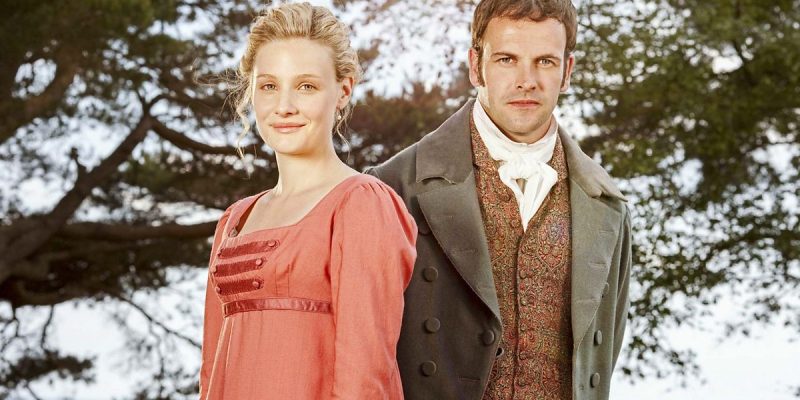Emma and Mr. Knightley – A Timeless Love from Jane Austen’s Classic Novel

Jane Austen’s Emma remains one of the most beloved novels in English literature, admired for its wit, social commentary, and deep understanding of human emotions. At the heart of the story lies the evolving relationship between Emma Woodhouse, a lively and confident young woman, and Mr. George Knightley, a man of integrity, patience, and wisdom. Their love story is not one of instant passion but of friendship, personal growth, and genuine understanding — making it one of literature’s most timeless romances.
The World of Jane Austen’s Emma
Published in 1815, Emma presents a detailed picture of early 19th-century English society. It is set in the fictional village of Highbury, where social class, manners, and marriage play central roles in everyday life. Unlike many heroines of her time, Emma Woodhouse is wealthy, independent, and determined never to marry. Her story is less about seeking love and more about learning humility, empathy, and emotional maturity.
In this small but vivid world, relationships are influenced by class, reputation, and propriety, yet Austen skillfully uses wit and irony to explore human behavior. Emma’s interactions with others — especially Mr. Knightley — form the emotional core of the novel.
Introducing Emma Woodhouse
Emma Woodhouse is described by Austen as “handsome, clever, and rich.” She is privileged, confident, and used to getting her way. Her intelligence is matched by her impulsive nature and a tendency to meddle in the lives of others, particularly when it comes to matchmaking.
Despite her good intentions, Emma’s interference often leads to misunderstandings and heartache. However, her journey through mistakes and self-reflection reveals her humanity. She learns that true wisdom lies not in controlling others but in understanding herself.
Mr. Knightley: The Voice of Reason
Mr. George Knightley, the owner of Donwell Abbey, stands as a model of moral strength and compassion. He is older than Emma and has known her since childhood, serving as both mentor and friend. Knightley is not swayed by vanity or flattery; he values honesty, integrity, and kindness.
While others in Highbury admire Emma uncritically, Mr. Knightley is the only one who consistently challenges her. His gentle criticism helps Emma recognize her flaws without diminishing her spirit. His guidance and genuine care for her form the foundation of their eventual love.
A Relationship Rooted in Friendship
What makes the connection between Emma and Mr. Knightley so powerful is that it grows naturally out of friendship. From the start, there is mutual respect and familiarity. They share similar values and a deep understanding of each other’s personalities.
Unlike other relationships in the novel based on convenience or status, theirs is built on equality and intellectual companionship. Knightley sees beyond Emma’s faults and admires her potential, while Emma learns to appreciate Knightley’s honesty and steadiness. Their bond evolves from guidance and affection into mutual admiration and love.
Lessons in Growth and Humility
A key theme in Emma is personal growth. Emma’s journey is one of self-discovery. Her misguided attempt to match her friend Harriet Smith with the wrong suitor and her insensitivity toward others expose her immaturity. Through these mistakes, Emma begins to understand the consequences of her actions.
Mr. Knightley’s steady presence plays an important role in this transformation. His constructive criticism encourages Emma to look inward. One of the most memorable moments occurs when Knightley scolds her for her unkind behavior toward Miss Bates at the picnic. This moment of shame becomes a turning point, awakening empathy and humility in Emma.
By the time Emma realizes her love for Mr. Knightley, she has matured into a wiser and more compassionate woman — worthy of the love she once overlooked.
The Moment of Realization
Emma’s realization that she loves Mr. Knightley is one of the most emotional and beautifully written scenes in the novel. After mistakenly believing that Mr. Knightley may love Harriet, Emma experiences jealousy and heartbreak for the first time. It is through this emotional turmoil that she finally understands her feelings.
Her love is not based on sudden passion but on years of friendship, respect, and shared experience. She sees that Knightley has always been her moral compass, her confidant, and her equal. Austen captures this moment with emotional depth, showing how love can blossom quietly through understanding and trust.
Mr. Knightley’s Love and Patience
Mr. Knightley’s love for Emma is marked by patience and restraint. He never seeks to dominate or control her; instead, he allows her to grow at her own pace. His affection is constant but unspoken until Emma is ready to reciprocate it.
When he finally confesses his love, it is a heartfelt declaration that reveals his admiration not just for her beauty, but for her spirit and growth. His humility and sincerity make the proposal scene one of the most touching in Austen’s works.
This mature and balanced love stands in contrast to the impulsive, self-serving relationships elsewhere in the novel, such as that of Frank Churchill and Jane Fairfax.
The Social Commentary Behind Their Relationship
Beyond romance, the relationship between Emma and Mr. Knightley reflects Austen’s commentary on class, gender, and morality. Emma’s independence and wealth challenge the traditional notion that women must marry for security. Mr. Knightley, though socially her equal, respects her autonomy.
Their union symbolizes a partnership based on equality — a progressive idea for Austen’s time. Unlike many literary couples of the era, Emma and Knightley’s relationship is one of mutual respect and emotional balance rather than dominance and submission.
Through their story, Austen suggests that the truest form of love is built on friendship, growth, and understanding, not on social expectation or financial necessity.
Comparing Emma and Mr. Knightley to Other Austen Couples
When compared to other famous Austen couples like Elizabeth Bennet and Mr. Darcy or Marianne and Colonel Brandon, Emma and Knightley stand out for their quiet depth.
Elizabeth and Darcy’s story is one of overcoming pride and prejudice, while Emma and Knightley’s journey focuses on self-awareness and personal growth. Their bond is subtle and mature — less about dramatic conflict and more about internal transformation.
Their long-standing friendship allows readers to witness love developing naturally over time, proving that enduring affection often grows from mutual respect and shared values.
Why Emma and Mr. Knightley’s Love Remains Timeless
The love story of Emma and Mr. Knightley continues to captivate readers because it represents something deeply human. It is a story of two imperfect individuals who learn from each other, grow together, and find happiness not through passion alone but through understanding.
Their relationship embodies the belief that love should make us better — more kind, more patient, and more self-aware. In a world where relationships often begin with attraction, their bond reminds readers that emotional intimacy and respect form the foundation of true love.
This timeless appeal has inspired countless adaptations, from films to modern retellings, proving that the lessons Austen wrote two centuries ago still resonate today.
Conclusion
Emma is not just a novel about romance; it is a story about becoming one’s best self. Emma Woodhouse begins as a confident but flawed young woman and grows into a compassionate, self-aware adult through the guidance and love of Mr. Knightley.
Their love story teaches that the strongest relationships are not built overnight but developed through friendship, honesty, and shared growth. It is a reminder that love is not about perfection but about learning, forgiving, and understanding one another.
Emma and Mr. Knightley’s romance endures because it reflects the universal truth that love grounded in respect and maturity is the most lasting of all.
FAQs
1. What makes Emma and Mr. Knightley’s relationship unique among Jane Austen’s couples?
Their relationship is based on long-term friendship, mutual respect, and personal growth rather than initial attraction or social pressure.
2. How does Mr. Knightley influence Emma’s character development?
He acts as her moral guide, gently pointing out her flaws and helping her grow into a kinder and wiser person without diminishing her independence.
3. Why does Emma initially reject the idea of marriage?
Emma feels self-sufficient and fears losing her independence. Her privileged upbringing gives her confidence that she does not need a husband for security.
4. What lessons about love does Jane Austen convey through Emma and Knightley?
Austen shows that true love is rooted in understanding, friendship, and moral integrity rather than wealth or appearance.
5. How does the ending of Emma reflect Austen’s views on marriage?
The marriage between Emma and Mr. Knightley symbolizes balance and partnership. It represents a union based on equality and mutual respect — a forward-thinking concept in Austen’s time.
Also read: Pure Paleo Protein Powder – Clean, Natural Fuel for Active Lifestyles











